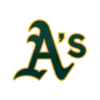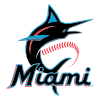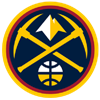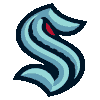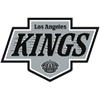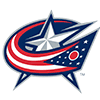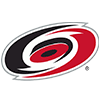Every year, there are undervalued players that fill in the rosters of league-winning teams. We know it's important to avoid early-round mistakes, and that you need to be somewhat lucky with having your key players avoid significant injuries, but connecting on undervalued players throughout your draft or auction is important as well.
There are plenty of ways to try and unearth overlooked talent, but I wanted to employ a slightly different approach. I wanted to compare multiple projection systems to ADP from the NFBC's January drafts. For this piece, I used Derek Carty's system "The BAT" at FanGraphs and Jeff Erickson's RotoWire projections on the site. The goal was to use two sets of projections that have different processes behind them, and see where they agreed on players as underpriced.
Once I had the ADP list, I assigned the dollar values from each set of projections to each draft slot. Then, I compared the projected dollar value of each player from each system to the value of their ADP draft slot, finding the difference between the two values (subtracting the player's projected value from the value of their draft slot -- negative differences indicated "overvalued" players, positive differences indicated "undervalued" players). Finally, I calculated the average difference from each of the two projection systems, in order to find players that the projections "agreed" on as undervalued.
For The BAT, I ran the auction values tool at FanGraphs to generate dollar values. For the RotoWire projections, I used the custom auction
Every year, there are undervalued players that fill in the rosters of league-winning teams. We know it's important to avoid early-round mistakes, and that you need to be somewhat lucky with having your key players avoid significant injuries, but connecting on undervalued players throughout your draft or auction is important as well.
There are plenty of ways to try and unearth overlooked talent, but I wanted to employ a slightly different approach. I wanted to compare multiple projection systems to ADP from the NFBC's January drafts. For this piece, I used Derek Carty's system "The BAT" at FanGraphs and Jeff Erickson's RotoWire projections on the site. The goal was to use two sets of projections that have different processes behind them, and see where they agreed on players as underpriced.
Once I had the ADP list, I assigned the dollar values from each set of projections to each draft slot. Then, I compared the projected dollar value of each player from each system to the value of their ADP draft slot, finding the difference between the two values (subtracting the player's projected value from the value of their draft slot -- negative differences indicated "overvalued" players, positive differences indicated "undervalued" players). Finally, I calculated the average difference from each of the two projection systems, in order to find players that the projections "agreed" on as undervalued.
For The BAT, I ran the auction values tool at FanGraphs to generate dollar values. For the RotoWire projections, I used the custom auction values tool on the site.
Here's a look at the hitters the two projection systems revealed to be the most undervalued, who carried a Top 300 ADP through January. In addition to the January ADP, the average dollar value from the two projection systems is listed next to each player, along with the average difference in their projected value compared to the pick value of their ADP.
Top 100 Players
Anthony Rendon, 3B, WAS | Jan ADP: 45.69 | AVG: $23.6 | Diff: $2.4
George Springer, OF, HOU | Jan ADP: 63.85 | AVG: $21.6 | Diff: $2.5
Jose Abreu, 1B, CHW | Jan ADP: 87.04 | AVG: $18.4 | Diff: $2.3
Yasiel Puig, OF, CIN | Jan ADP: 88.62 | AVG: $21.5 | Diff: $5.5
Eddie Rosario, OF, MIN | Jan ADP: 90.62 | AVG: $20.5 | Diff: $5.0
Rendon is frequently taken at the Round 3-4 turn of a 15-team league. He's hit .300 and slugged at least .533 in each of the last two seasons, while scoring at least 80 runs, driving in at least 90, and hitting 24 or more homers in each of those campaigns. Some of the early career durability concerns have waned in recent years, as he's only been on the disabled list once (in 2018) in the last three seasons.
Springer has kept his strikeout rate under 20 percent in back-to-back seasons, and his placement in the Houston lineup paired with a steady OBP (career .356) has enabled him to pile up more than 100 runs scored in three consecutive seasons. He's proven to be less of a batting average liability than he appeared to be as a rookie (and as a prospect), and Springer looks the part of a top-50 overall player with a slightly discounted price.
Abreu was hampered by a groin injury that required surgery, and a subsequent infection in September en route to his worst MLB season in five years with the White Sox in 2018. Even if the per-game production doesn't snap back to the 30+ homer levels we are accustomed to, Abreu has produced early-round value with a suboptimal supporting cast throughout his time in Chicago. Thus far, I haven't found a projection system with an average below .280 for Abreu in 2019, and he should easily top 25 homers with a full season of health, especially with more time in the DH role now that Yonder Alonso can make some of his starts at first base.
Puig peaked with an early pick of 69th overall in January, and his March ADP will probably get closer to that mark with approximately eight weeks before Opening Day. The move to Cincinnati gives him a nice home park power boost, and he already had a path to a 30-20 season a year ago in Los Angeles, hitting lower in the order than he'll hit with the Reds. The projections for Puig are such that a top-50 overall pick is justifiable. (I wrote about the move to Cincinnati in greater detail back in December.)
Rosario's final 2018 numbers were right in line with his 2017 breakout, albeit with a slight uptick in runs scored, and a more efficient success rate on the basepaths (8-for-10). He might have a 30-homer season in his bat, as his 44.1% flyball rate was a significant jump from the 37.4% mark he posted in 2017, and the batted-ball profile shift came from a reduction in groundballs. Moreover, the addition of Nelson Cruz, C.J. Cron and Jonathan Schoop, plus the potential returns of a healthy Byron Buxton and Miguel Sano, and a full season of Jorge Polanco at short could give the offense as a whole a lift in Minnesota, which would offer a potential boost to Rosario's counting stats.
"Old and Boring"
Justin Upton, OF, LAA | Jan ADP: 100.54 | AVG: $20.8 | Diff: $6.1
Scooter Gennett, 2B, CIN | Jan ADP: 106.42 | AVG: $19.0 | Diff: $5.2
Nelson Cruz, DH, MIN | Jan ADP: 106.65 | AVG: $20.4 | Diff: $6.7
Justin Turner, 3B, LAD | Jan ADP: 110.00 | AVG: $19.5 | Diff: $6.2
I'm old enough to remember when people were overpaying for Upton as an early-rounder hoping to catch a five-category monster year. Last season, he hit .257 with 30 homers, 80 runs, 85 RBI and eight steals. He's posted three straight seasons with 30-80-85, and while the stolen bases could disappear at any time, Upton's power and run production could approach Khris Davis' output (even if he hits in the .240s as some systems have projected) at a much lower price.
Gennett may be a quiet loser in the Reds' roster shuffle, as Yasiel Puig's arrival could nudge him down in the order, and the eventual arrival of top prospect Nick Senzel might create a logjam for playing time in the infield. There's nothing in his profile to suggest a plate skills collapse will cost him plate appearances, but it's easy to wonder if Gennett can repeat as a 20-homer contributor, as he hit just seven homers in his last 249 plate appearances in the second half of 2018. Even if the power output drops slightly, and the R/RBI totals fall from a move down in the order, he could still be profitable at his January ADP.
Cruz's batting average floor appears to be falling -- the .256 mark he finished with last season was his lowest since 2007 -- but he's positioned for a park upgrade with the move to Target Field, and he should remain a valuable source of homers, RBI and runs for one more year. Most projection systems have Cruz hitting .270 or better, but I might be inclined to take the under on that, even though I like him a lot at this price. The typical UT-only discount now comes with extra savings because he's 38 years old, and possibly because of misconceptions about the park factors in Minnesota.
Turner is an older version of Anthony Rendon, and the discount you get for the injury history he has seems to overcorrect slightly for the risk he presents. He's become one of my favorite targets around this point in drafts.
Confusion About Risk?
A.J. Pollock, OF, LAD | Jan ADP: 114.96 | AVG: $16.9 | Diff: $4.2
Joey Gallo, OF, TEX | Jan ADP: 120.04 | AVG: $20.6 | Diff: $8.2
Rougned Odor, 2B, TEX | Jan ADP: 130.42 | AVG: $19.1 | Diff: $7.3
David Peralta, OF, ARI | Jan ADP: 141.19 | AVG: $17.3 | Diff: $6.1
Now that he has a team, Pollock might inch his way into the Top 100. He's more likely to hit 30 homers and steal 10 bases than to hit 10 homers and steal 30 bases now that he's on the wrong side of age 30. Pollock should be a regular at or near the top of the batting order for the Dodgers, and projecting him for another 20-homer, 10-steal season can be done even with an adjustment for his injury history. Earlier in his career, Pollock had back-to-back .300 seasons, but he's hit .266 and .257 the last two seasons, with the latter mark accompanied by a surge in strikeouts (21.7% K% in 2018) and an increase in flyballs. Soft tissue injuries to his legs are a legitimate concern, but the fractured elbow suffered while sliding into home plate during a Cactus League game in 2016 can be filed into the unlucky section of the injury file.
No player in the majors had a higher barrel rate than Gallo in 2018. He's available at this price because owners are seemingly afraid of taking on his batting average. Offsetting Gallo's low average is actually pretty easy, and it might be best to think of Gallo as a player to pair with a high average, high-PA volume hitter.
If you sought out Daniel Murphy in the first five or six rounds (84.00 January ADP), and followed up with Gallo two or three rounds later, you would have this level of production projected over two roster spots.
Murphy: 565 AB, 171 H (.304 AVG), 22 HR, 82 R, 89 RBI, 4 SB
Gallo: 551 AB, 125 H (.226 AVG), 46 HR, 96 R, 112 RBI, 6 SB
"Joey Murphy" & "Daniel Gallo" would each project for:
558 AB, 148 H (.265 AVG), 34 HR, 89 R, 100.5 RBI, 5 SB
For a lower price than Eugenio Suarez himself, you effectively have two Eugenio Suarez projections in your lineup.
The Rangers as a team, appear to have mostly underpriced bats up and down the lineup. Odor was awful to begin last season, but he started to turn things around in June, while finishing with a batting average that was 49 points higher than his bottomed-out mark in 2018 (.204). Odor enters his age-25 campaign with 2,705 MLB plate appearances under his belt, and while he's a flawed real-life player if he's not drawing walks and if he's getting caught stealing frequently (career 51-for-90, 5.0 BB%), Odor can be an above-average defender at second base, and as he's shown twice in his young career, he brings 30-homer pop to the table. If he's in the .245-.250 range with his average, with 25-plus homers, double-digit steals, and 75-plus runs and RBI, he'll be very profitable in 2019.
The D-backs' decision to let Pollock and Patrick Corbin leave as free agents, and to trade Paul Goldschmidt to the Cardinals in the final year of his contract will take a significant share of the run production away from the Arizona offense. Peralta's 2018 surge was not totally unlike the breakout of Eddie Rosario the year prior, though a surge in HR/FB (23.4% in 2018, 12.2% in 2017) fueled the spike to 30 homers, not a shift in his batted-ball profile such as an increase in flyballs. The value Peralta brings comes from a steady, high batting average over 500-plus at-bats, a path to 20 homers, and a prominent spot in the batting order, albeit with a significantly reduced supporting cast barring a late winter move or two.
They Haven't Broken Out...Yet
Rafael Devers, 3B, BOS | Jan ADP: 152.24 | AVG: $13.2 | Diff: $2.7
Nomar Mazara, OF, TEX | Jan ADP: 159.85 | AVG: $14.3 | Diff: $4.5
Both Devers and Mazara carried higher ADP last draft season. In most instances, drafting or paying up for a young player based on potential requires overpaying relative to projections.
Devers turned 22 in October, and a 90 wRC+ for a 21-year-old is nothing to scoff at. If he yields less playing time to the Boston bench infielders in 2019, Devers has a shot at hitting 30 homers for the first time as a big leaguer. It would be surprising to me if he hit .240 again, as his eye at the plate is improving (10.6% BB%, 23.6% K% in the second half of 2018), and his hit tool projects to be at least average, if not a tick better. The supporting cast is excellent for propping up his counting stats as well, which brings a nice floor for him if the full power breakout is still another year or two away.
Like Devers, Mazara broke into the majors at a young age with lofty expectations, which to this point, have not been fully met. Still, he's swatted 20 homers in three straight seasons to begin his career, and he won't turn 24 until the last week of April. A surge in flyballs would go a very long way in unlocking Mazara's power, as he's already making a lot of hard contact. Last season, Mazara ranked 55th among 332 qualified hitters in hard-hit rate (% of batted balls hit at 95+ MPH), while his hardest hit batted ball clocked in at a scorching 117.2 mph (ninth-highest max in MLB). New hitting coach Luis Ortiz will be tasked with getting Mazara to generate loft with his swing more consistently. If that happens, a sharp increase in home-run output is well within reach.
Bad Contracts
Eric Hosmer, 1B, SD | Jan ADP: 167.81 | AVG: $15.1 | Diff: $5.8
Elvis Andrus, SS, TEX | Jan ADP: 170.77 | AVG: $13.4 | Diff: $4.2
Carlos Santana, 1B, CLE | Jan ADP: 201.77 | AVG: $12.5 | Diff: $5.1
The Padres' puzzling decision to give Hosmer an eight-year deal last winter is likely clouding the judgment of the fantasy community. He hit .253 last year -- his worst batting average since 2013 -- and the power output slipped to 18 homers with the move into Petco Park. Despite a middling .253/.322/.398 line, Hosmer scored 72 runs and drove in 69 more. The Padres' lineup is improving, and it's possible that one of Bryce Harper or Manny Machado will call San Diego home by the end of the winter, but even if that doesn't happen, Hosmer is a high-volume player in Year 2 of a massive contract, and one who has had wild fluctuations in output from year to year in the past. Given the lefty power-sapping tendencies of Petco Park, 20 home runs might be his ceiling, but he'd fill in nicely as a discounted first-base option if he hits .270 with 18-20 homers, 150 R+RBI, and a handful of steals. Of the players written up in this article to this point, Hosmer is the one I'm least likely draft at his ADP sticker price, but I'm not avoiding him if the rest of the room allows him to slide a couple rounds.
A fractured elbow in April likely hampered Andrus' power output even after he returned. Andrus hit 20 homers for the first time in his career in 2017, and it's more likely that a 10-homer, 20-steal season is coming with a healthy campaign in 2019. Prior to the lengthy absence last season, Andrus had played at least 145 games in each of his first nine MLB seasons. Admittedly, I'm slightly more optimistic than most about his steals coming back, but this looks like a very nice discount.
Santana is back in a familiar place in Cleveland just one year after signing a three-year, $60 million deal with the Phillies. He continues to draw a lot of walks, and he's now kept his K% under 15 percent in each of the last three seasons. Straight up, I like him better than Hosmer. The Indians' lineup should score more runs than the Padres with ease (even if San Diego lands a big free agent bat), and the batting average downside with Santana may be getting overestimated by the market thanks to his one-year tour of the National League.
After Round 15
Justin Smoak, 1B, TOR | Jan ADP: 236.04 | AVG: $13.1 | Diff: $7.6
Odubel Herrera, OF, PHI | Jan ADP: 238.12 | AVG: $12.1 | Diff: $6.8
Jake Bauers, 1B/OF, CLE | Jan ADP: 245.73 | AVG: $9.9 | Diff: $4.8
Josh Bell, 1B, PIT | Jan ADP: 249.58 | AVG: $11.1 | Diff: $6.3
Max Kepler, OF, MIN | Jan ADP: 249.62 | AVG: $9.6 | Diff: $4.8
Tyler White, 1B, HOU | Jan ADP: 253.62 | AVG: $10.8 | Diff: $6.6
C.J. Cron, 1B, MIN | Jan ADP: 261.65 | AVG: $9.8 | Diff: $5.8
Shin-Soo Choo, OF, TEX | Jan ADP: 270.92 | AVG: $9.5 | Diff: $6.0
Jake Lamb, 3B, ARI | Jan ADP: 271.62 | AVG: $8.3 | Diff: $4.8
Maikel Franco, 3B, PHI | Jan ADP: 279.77 | AVG: $8.5 | Diff: $5.2
Kevin Pillar, OF, TOR | Jan ADP: 281.50 | AVG: $7.7 | Diff: $4.5
Asdrubal Cabrera, 2B/SS/3B, TEX | Jan ADP: 292.12 | AVG: $7.8 | Diff: $5.1
Smoak and Kendrys Morales need to keep Rowdy Tellez at bay in what could amount to an ongoing battle for playing time at first base and DH in Toronto. If that happens, Smoak is a nice fallback option if you are scrambling for a first-base option in double-digit rounds.
Herrera hit a career-low .255, but posted career-highs in homers (22) and RBI (71) in 2018. The stolen bases have dried up from the 41 he bags he swiped in 2015 and 2016 combined, as he was just 5-for-7 last season. The shift in approach that generated the added power was a pull-heavy one (career-high 38.8% pull rate, career 32.8%), which could permanently reduce Herrera's batting average floor as defensive shifts will be more effective against him.
Bauers drew a lot of walks, but struck out at an elevated clip (26.8% K%) in his rookie campaign. It was somewhat surprising to see the Rays flip him to Cleveland earlier this winter, though it's worth noting that he'll get a nice power boost as a left-handed hitter at Progressive Field for half of his games. Projection systems as a whole have a wide range of outcomes for Bauers, but he should play a lot in a good Cleveland lineup if he can bring the strikeout rate down in his first full season at the big-league level.
Add Bell to the list of cheap first-base options I'll scoop up at this price if I'm looking for a high volume of playing time to fill a corner-infield spot, though I wonder if one of Colin Moran or Jung-Ho Kang will see occasional time at first base while the other mans the hot corner. Bell's power surge in 2017 came with a 41.5% pull rate, but he failed to repeat the 26-homer effort of that campaign, while falling to just 12 long balls in 2018. His plate discipline is very good, and the raw tools suggest that his success two years ago wasn't a complete fluke.
Kepler laid the foundation for another step forward in the power department last season, turning some of his groundballs into flyballs (career-high 46.2% FB%) and posting the best hard-hit rate (37.1%) of his career. I wouldn't be surprised to see him deliver a .250+ average and 25+ homers in 2019 if those underlying numbers and his improved plate discipline (11.6% BB%, 15.7% K%) hold up. He's one of my most frequently-targeted outfielders outside the Top 200 overall.
White has nothing left to prove at Triple-A, and he's already 28 years old, but his 144 wRC+ in very limited playing time with the Astros last season (237 plate appearances) hints at a possible Jesus Aguilar of 2019 situation if he's able to secure 550-600 plate appearances. Yuli Gurriel and White are currently projected to handle the bulk of the playing time at first base and DH, but Kyle Tucker is making a push for a regular spot in the outfield, which could prompt the Astros to float the DH spot with Michael Brantley and Josh Reddick occasionally getting time in the lineup without defensive responsibilities. Nevertheless, White is on my short list of high-upside targets at this point in the draft, especially if I miss out on Luke Voit.
Cron is another somewhat flawed player, in that he has big power, but he's never walked enough to be a prototypical middle-of-the-order thumper. The Twins will likely hit him fifth or sixth in the order, and give him enough playing time to give him a shot at another 25 homers. It bodes very well for Cron that the Twins lack an up-and-coming left-handed power bat to put on the big side of a platoon with him at first base.
Choo has played more than 145 games in three of the last four seasons, but he'll turn 37 in July, so it's fair to worry about his durability. It will be interesting to see how Willie Calhoun is incorporated into the lineup in 2019, as the Rangers currently have Joey Gallo penciled in to play left, Ronald Guzman at first base, and Choo listed as their primary DH. With a good eye at the plate, and steady 20-homer pop with non-zero speed (6-for-7 on the basepaths), Choo should be a nice filler as a fourth or fifth outfielder in mid-sized mixed leagues and deeper.
Lamb is coming back from shoulder surgery, and he'll be tasked with helping to offset some of the production lost with the departures of A.J. Pollock and Paul Goldschmidt this winter. The D-backs are planning on using him at first base, which will give him dual eligibility early in 2019 since he'll begin as a 3B-only option. Lamb is also in a prime position to platoon with Christian Walker, which will afford him regular days off, and potentially salvage his batting average floor in the .240 range. Pre-injury, Lamb hit 59 homers between 2016 and 2017, but the power ceiling has been lowered slightly thanks to the installation of the humidor at Chase Field last season.
Franco lost his hold on the starting third-base job for a brief time in 2018, and he missed games with multiple injuries in September, which dropped his workload to 465 plate appearances last season after consecutive years of finishing with more than 600. He's hit at least 22 homers in three straight seasons, but his run and RBI output has lagged, especially for a hitter who has avoided strikeouts as adeptly as he has to this point (13.3% K% in 2018, career 15.5%). The biggest threat to Franco's playing time appears to be Scott Kingery, unless the Phillies end up making a late push to bring in Manny Machado in free agency.
Pillar might be another case of a player we tend to undervalue because of his real-life limitations as a hitter. For his career, he's posted a .261/.298/.398 line. Historically, he hasn't drawn walks, and 2018 marked the first time that his hard-hit rate topped 27.3% (34.0%). Pillar's defense still grades as above average in center field, which drives his playing time. Moreover, he's posted double-digit homers and steals in three of the last four seasons, while averaging just over 14 steals annually since 2016 after posting a career-high 25 steals in 2015. The upside is limited, but the role is secure it he should deliver another 10-homer, 10-steal campaign with room for slightly more.
Cabrera's 2019 outlook is simple -- he's a versatile infielder eligible at three positions, and now he's playing half of his games in a hitter-friendly home park after signing with Texas. Players with the ability to cover three spots entering the season, who typically return $10 in value available after Pick 250 are generally free money. I expect to have several teams with Cabrera on them as draft season rolls along, but the price will probably creep up 40-50 picks from his current ADP in the months ahead.










